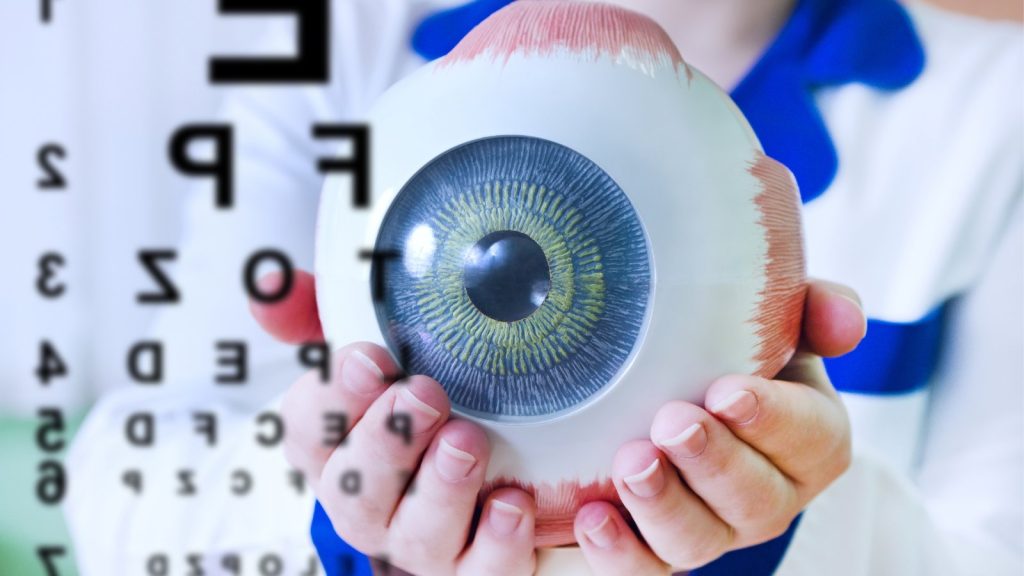The Function of Advanced Diagnostic Equipment in Identifying Eye Disorders
In the world of ophthalmology, the application of advanced diagnostic tools has reinvented the early identification and administration of numerous eye problems. From spotting subtle modifications in the optic nerve to keeping an eye on the development of retinal conditions, these modern technologies play an essential duty in boosting the precision and performance of detecting eye problems. As the demand for exact and timely diagnoses continues to expand, the combination of sophisticated devices like optical comprehensibility tomography and visual field testing has actually come to be indispensable in the realm of eye care. The intricate interaction in between technology and ocular techniques not just clarifies complex pathologies yet likewise opens doors to tailored therapy methods.
Value of Early Medical Diagnosis
Very early diagnosis plays a crucial function in the reliable administration and treatment of eye conditions. Timely recognition of eye problems is vital as it enables for prompt intervention, possibly avoiding more progression of the disease and reducing long-term issues. By spotting eye problems at a beginning, doctor can supply appropriate treatment strategies customized to the specific condition, inevitably leading to much better end results for patients. Furthermore, very early diagnosis makes it possible for patients to gain access to needed assistance solutions and resources quicker, enhancing their general lifestyle.

Innovation for Identifying Glaucoma
Advanced analysis modern technologies play a vital function in the early discovery and tracking of glaucoma, a leading root cause of irreversible loss of sight worldwide. One such technology is optical comprehensibility tomography (OCT), which supplies comprehensive cross-sectional photos of the retina, permitting the measurement of retinal nerve fiber layer density. This dimension is important in assessing damages caused by glaucoma. One more advanced device is visual area testing, which maps the level of sensitivity of a client's aesthetic field, aiding to discover any locations of vision loss feature of glaucoma. In addition, tonometry is utilized to gauge intraocular pressure, a significant risk aspect for glaucoma. This test is vital as elevated intraocular stress can bring about optic nerve damage. In addition, newer modern technologies like using expert system algorithms in examining imaging information are showing appealing lead to the very early detection of glaucoma. These advanced diagnostic tools make it possible for ophthalmologists to diagnose glaucoma in its beginning, enabling prompt intervention and better administration of the condition to avoid vision loss.
Role of Optical Comprehensibility Tomography

OCT's ability to quantify retinal nerve fiber layer thickness enables for specific and objective dimensions, aiding in the early detection of glaucoma also prior to aesthetic field flaws become evident. Generally, OCT plays an essential duty in improving the analysis precision and administration of glaucoma, inevitably adding to much better end results for people at threat of vision loss.
Enhancing Medical Diagnosis With Visual Area Screening
An important component in comprehensive ophthalmic analyses, aesthetic field testing plays a pivotal duty in enhancing the diagnostic procedure for numerous eye disorders. By analyzing the complete extent of a patient's visual field, this test supplies essential details concerning the practical integrity of the whole visual path, from the retina to the aesthetic cortex.
Aesthetic area testing is especially valuable in the medical diagnosis and administration see page of problems such as glaucoma, optic nerve disorders, and various neurological conditions that can influence vision. Through quantitative dimensions of peripheral and main vision, medical professionals can discover refined adjustments that might show the presence or development of these disorders, even prior to noticeable signs and symptoms take place.
Furthermore, visual field testing permits the tracking of treatment effectiveness, assisting ophthalmologists tailor healing treatments to individual clients. eyecare near me. By tracking modifications in visual area efficiency gradually, health care suppliers can make enlightened decisions about readjusting drugs, my sources recommending surgical interventions, or carrying out other appropriate actions to preserve or enhance a person's aesthetic function
Managing Macular Deterioration

Final Thought
In verdict, progressed diagnostic tools play an important duty in recognizing eye disorders early on. Technologies such as Optical Coherence Tomography and visual field testing have considerably improved the accuracy and effectiveness of identifying problems like glaucoma and macular deterioration.